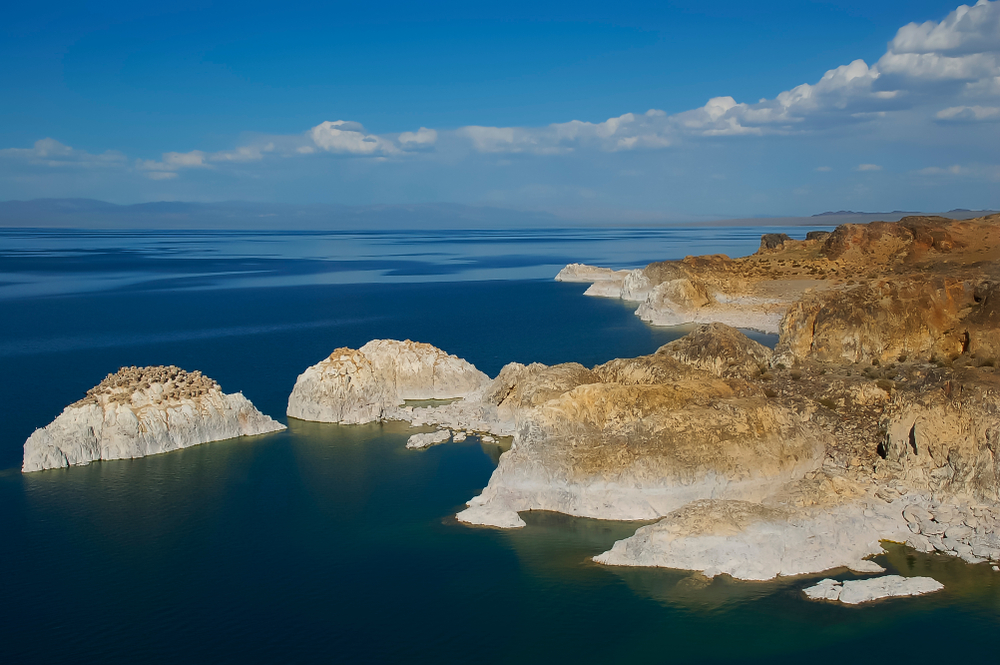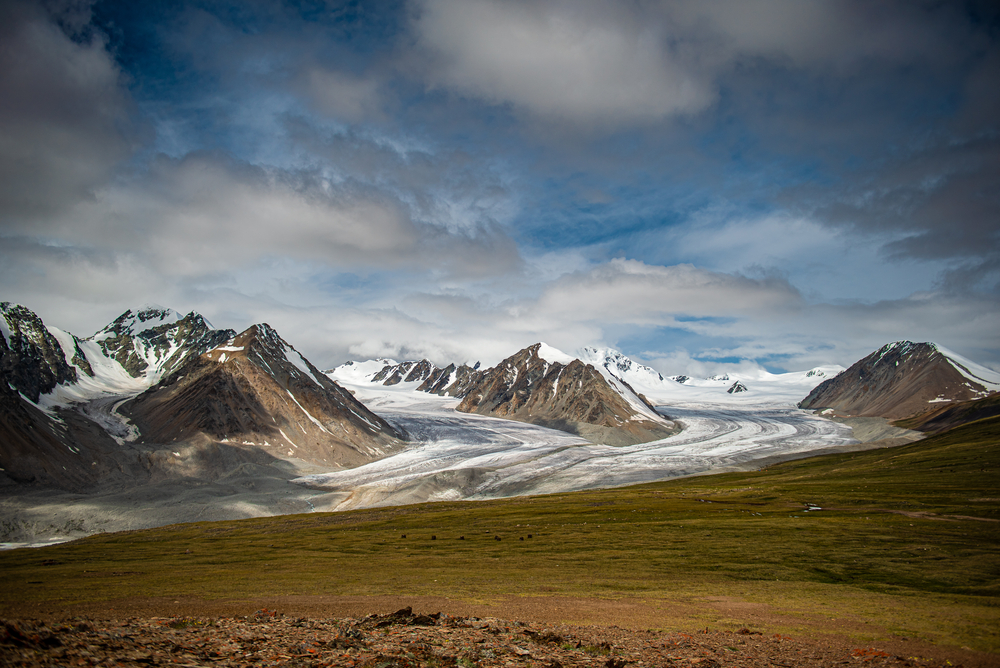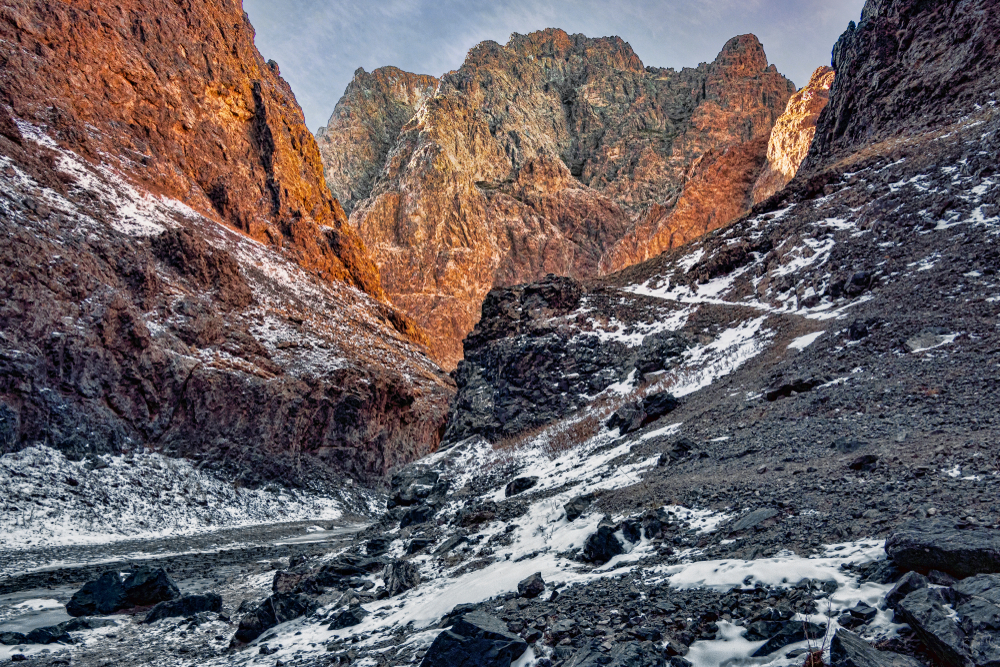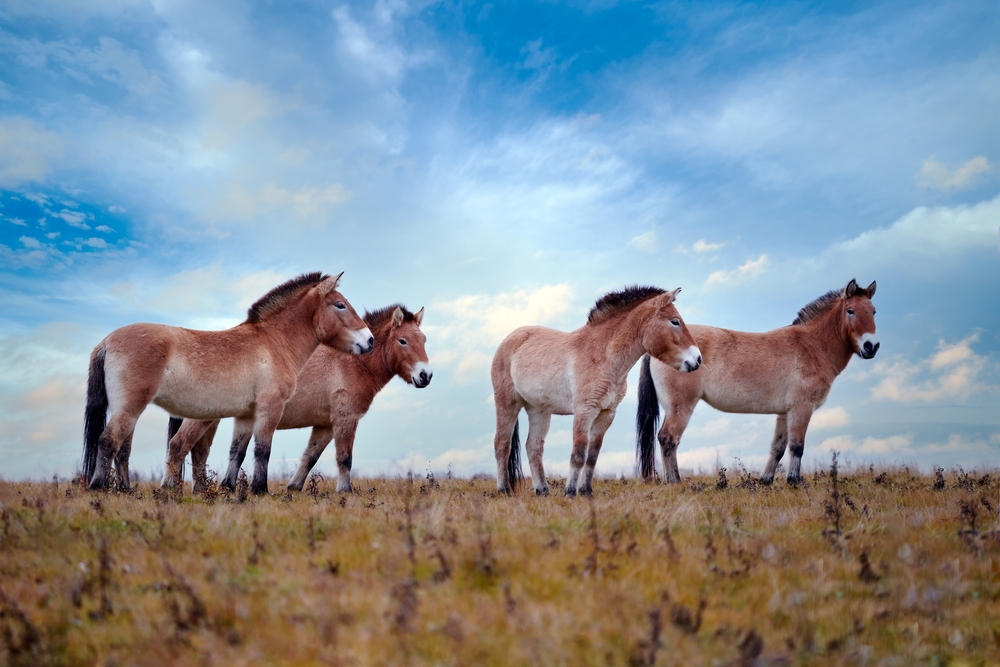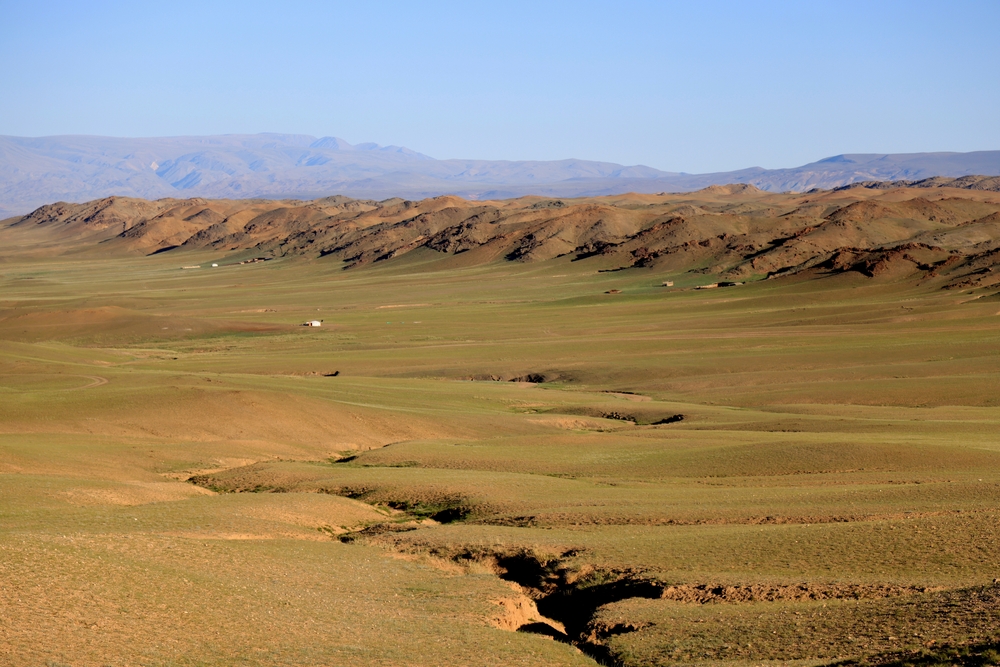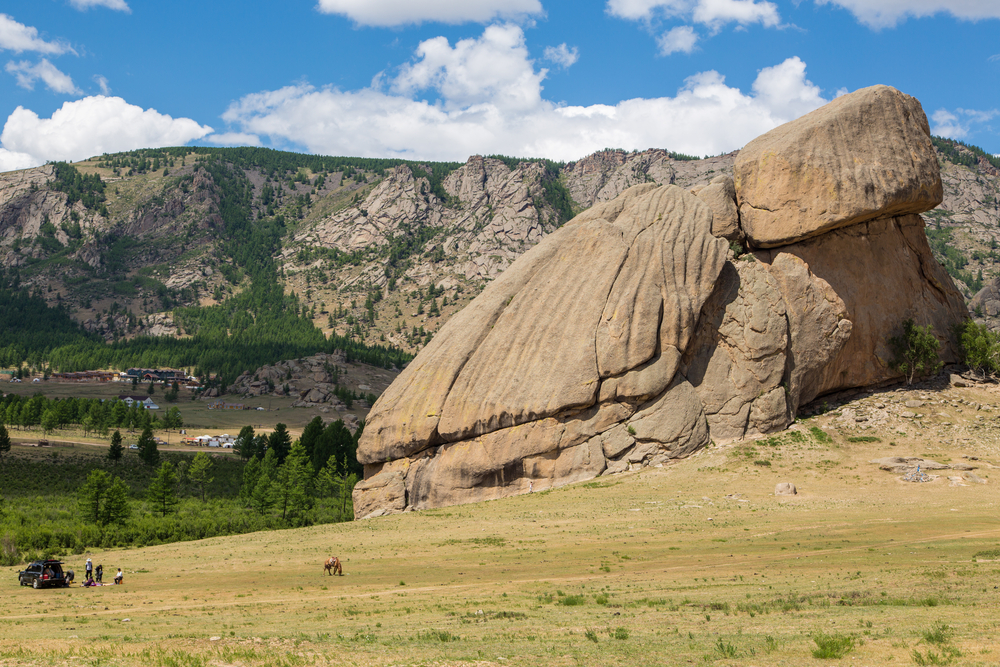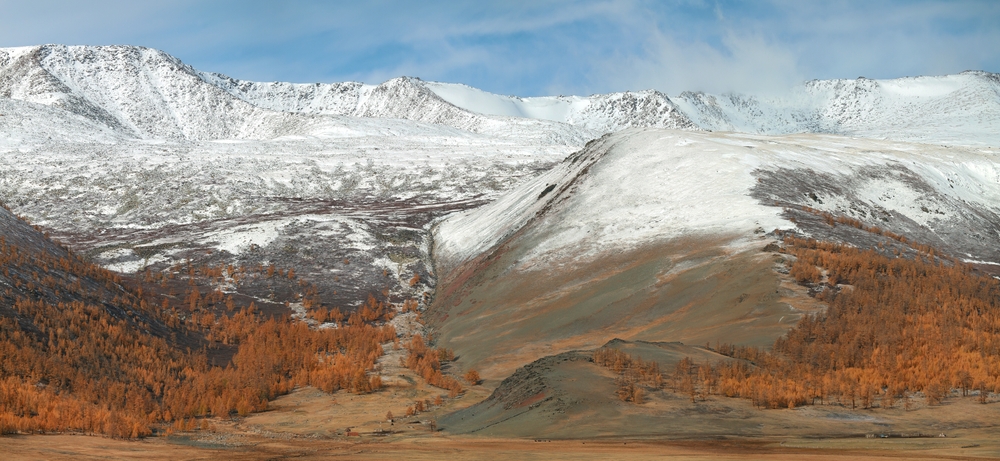Khan-Khokhi Khyargas Mountain Overview
The Khan-Khokhi Khyargas Mountain National Park, located in western Mongolia, is a striking protected area that spans approximately 2,702 square miles (7,000 square kilometers). Known locally as Хан Хөхий Хяргас уулын үндэсний хүрээлэн, the park sits within the Uvs Province, bordered by the stunning Great Lakes Depression and neighboring the vast Uvs Nuur Basin.
The terrain of the park is as diverse as it is dramatic, with rugged mountain ranges, expansive desert steppes, and pristine freshwater lakes. The Khan-Khokhi Mountains dominate the landscape, with peaks that provide awe-inspiring views and harbor unique ecological systems. Among its water features, Lake Khyargas, a brackish lake renowned for its aquamarine hues and striking rock formations, stands out as a captivating centerpiece.
The park’s vegetation varies across its diverse elevations and ecosystems. Alpine meadows filled with wildflowers blanket the higher altitudes, while the lower steppes are home to drought-resistant shrubs and grasses. These ecosystems are dotted with Saxaul trees and rare plants adapted to the region’s arid climate, offering a stunning variety of flora.
Wildlife enthusiasts will find Khan-Khokhi Khyargas Mountain National Park to be a treasure trove of biodiversity. The park provides a sanctuary for endangered species such as the snow leopard and the Siberian ibex, which roam the craggy mountain slopes. Mongolian gazelles and argali sheep can also be found traversing the vast steppes, while the occasional sighting of wolves or Eurasian lynxes adds an element of excitement.
The park’s birdlife is equally impressive, featuring species like the golden eagle, the bearded vulture, and various migratory waterfowl that frequent Lake Khyargas. Ornithologists are particularly drawn to this area for its unique blend of upland and aquatic avian species.
Popular features of the park include the serene shores of Lake Khyargas, where visitors can explore rock formations and marvel at its vibrant birdlife. The sacred Khan-Khokhi Mountains offer challenging trekking opportunities, rewarding hikers with panoramic views of the surrounding landscapes. The park’s natural hot springs, which are reputed to have therapeutic properties, are another major draw for visitors seeking relaxation in a pristine environment.
Visitors can engage with the park in multiple ways, including hiking, birdwatching, and camping under the expansive Mongolian skies. The area is also rich in cultural heritage, with ancient petroglyphs and burial mounds offering a glimpse into the history of the nomadic peoples who have long inhabited this region. Guided tours provide insights into both the natural and cultural significance of the area, making it a deeply enriching experience for travelers.
Conservation challenges in the park primarily stem from climate change and human activities, including overgrazing by livestock and the expansion of agriculture. However, management efforts have seen significant successes, including community-based initiatives to mitigate human-wildlife conflict and protect endangered species like the snow leopard. Collaborative efforts with local herders and international organizations have also bolstered conservation education and sustainable practices, ensuring the park’s ecosystems remain resilient.








































































